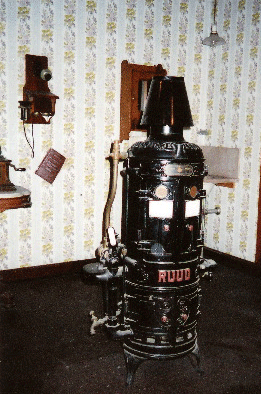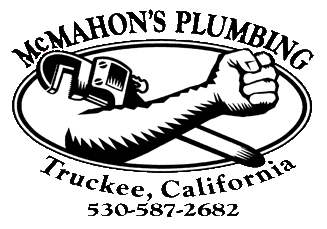
A Brief History of Plumbing
 Early man had little reason to think about public sanitation. Families, clans and tribes usually located their encampments adjacent to fresh water streams and lakes. In a vast wilderness with few inhabitants, human waste was fairly easy to manage and avoid. However, as growing populations began to congregate in large castles, villages and cities, the need for systems of fresh water delivery and waste management quickly became all too apparent.
Early man had little reason to think about public sanitation. Families, clans and tribes usually located their encampments adjacent to fresh water streams and lakes. In a vast wilderness with few inhabitants, human waste was fairly easy to manage and avoid. However, as growing populations began to congregate in large castles, villages and cities, the need for systems of fresh water delivery and waste management quickly became all too apparent.
About 4,000 years ago, around 1700 BC, the Palace of Knossos on the isle of Crete enjoyed technology that included clay fresh water piping and massive stone sewers. The ancient Greeks were known to have effective forms of plumbing as did the Romans. The Romans not only built thousands of miles of roads for access to the farthest reaches of their empire, but also constructed great aqueducts to convey fresh water from remote areas to their teaming cities and public baths.
Rome's first sewers were built between 800 BC and 735 BC, five hundred years before the first aqueducts were built. Up until that time, plumbing systems were constructed of clay, stone, or wood. The Romans were among the first to use metals in plumbing systems. The first and most common metal used was lead. It seemed ideal due to its superior malleability, durability, and resistance to corrosion. In fact, the term plumbing came into existence at this time. "Plumbus" is Latin for lead. A plumber was a worker in lead who installed any plumbing device or apparatus, roofing and flashing, drains, gutters, etc. In other words, his scope of work was any thing having to do with the supply of fresh water to, or the conveyance of sewage and wastewater away from a building.
We know now that lead is toxic at elevated levels and even slight exposure can be harmful to ones health. It is now believed that many of the physical and mental ailments that struck certain populations at this point in history can be attributed to lead exposure and lead poisoning.
The Roman Empire had extended its rule over most of Europe and well into Britain by 43 A.D. They would rule all that they had conquered for the next 500 years. Then, as their remote outposts began to yield to invasions of Irish, Scotts and Saxons, Rome itself began its decline and fall.
By the time the Barbarians swept the continent, the sanitation technology developed by past civilizations was mostly nonexistent for the next thousand years. When the Bubonic Plague, or Black Death, descended upon Europe in 1347, it found ideal conditions to thrive in the filth and vermin infestations of densely populated areas. These areas lacked sufficient means to provide their inhabitants with fresh water, or to effectively eliminate sewage and waste.
The Black Death would last for only four years, but would manage to wipe out approximately one third of Europe's population--roughly 25 million people. The world wide death toll is estimated to have been around 75 million.
Chamber pots were in use from the time of the ancient Greeks well into the nineteenth century. The contents of these vessels were usually disposed of by tossing them out of doors or windows into the street.
The development of common sewage systems in large cities created its own new set of problems. With little knowledge of ventilation techniques and the complete absence of water seal traps, noxious fumes were a serious problem as well as airborne pathogens. This condition persisted up until the advent of modern waste disposal methods still in use today.
Throughout the eighteen hundreds in America, epidemics of cholera, typhus, and typhoid fever swept the country. Following the American Civil War, the germ theory became a widely accepted fact. People had finally made the connection between infectious diseases and contaminated water supply and inadequate waste disposal. Outbreaks and epidemics of these diseases still occur today in developing countries that lack adequate fresh water and sanitary waste systems.
The English Public Health Code was enacted in 1848 and became the gold standard of its time for public sanitation. Indoor sanitary plumbing systems were first developed in America and then spread to Europe. Government and local jurisdictions began to set and enforce standards for training, examination and licensing of plumbers and pipe fitters. Trade organizations were formed and plumbing health codes were established and are constantly evolving to this day.
In America, modern sanitation systems and residential plumbing have become available to virtually everyone since the last half of the twentieth century. Copper, steel and plastics are the predominant materials used in plumbing installations today. Wooden fixtures have given way to sleek, sanitary, nonporous surfaces. Fittings, piping and faucets are manufactured to exacting standards and sizes and are virtually lead free.
The lowly plumber and the science of plumbing have surely prevented more disease and improved more lives than all of medical science. The plumber truly does "protect the health of the nation."
Present Day
 Sean McMahon is the owner and operator of McMahon's Plumbing. He brings to each call and each customer over 30 years of experience in residential and commercial service, repair and installation. With a strong family background in plumbing and construction, Sean has plied his trade throughout Northern California and Northern Nevada.
Sean McMahon is the owner and operator of McMahon's Plumbing. He brings to each call and each customer over 30 years of experience in residential and commercial service, repair and installation. With a strong family background in plumbing and construction, Sean has plied his trade throughout Northern California and Northern Nevada.
Sean constantly strives to provide the best possible service and value to his customers. He enjoys many long term relationships with his customers, some of which go back as far as twenty years.









